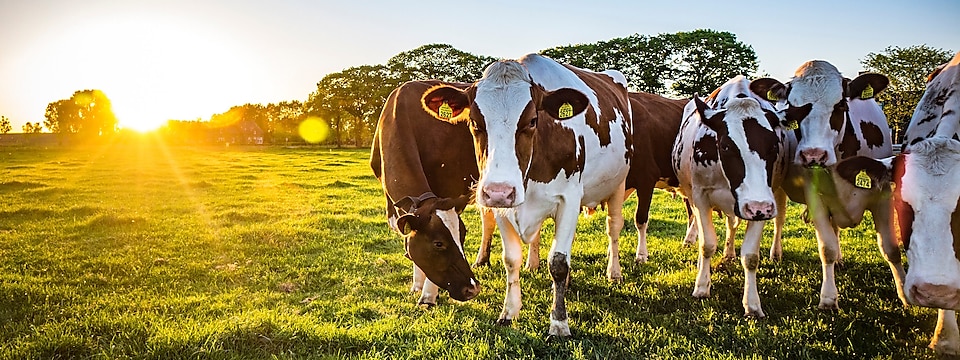R-CNG as a fuel for transportation
RNG can be used in the form of compressed natural gas (R-CNG) to fuel vehicles, reducing CO2 emissions from around 50% -100% compared to fossil fuels on a well-to-wheel basis.

Renewable natural gas (RNG) is a low-to negative-carbon natural gas produced from a number of sources including livestock waste, landfills, wastewater sludge, food waste and other organic waste operations.
RNG can be used for electricity generation, heating, cooking, bioplastics and vehicle fuel. Renewable natural gas is essential for the growth of lower carbon fuel markets and to help reduce the impact of organic waste.
Shell Renewable Natural Gas Benefits
Title: Shell RNG Video 2
Duration: 51 seconds
[Transition]
Shell ripple Pecten appears onscreen.
[Transition]
Full screen image showing vehicles on a highway.
On screen text appears onscreen accompanied with graphical elements.
[Onscreen text]
The world’s population continues to grow
[Voiceover]
The world’s population continues to grow
[Transition]
Full screen image showing a Shell employee observing large piles of waste.
[Onscreen text]
With that growth comes waste
[Voiceover]
With that growth comes waste
[Transition]
Focus changes and five images appear onscreen accompanied by graphical elements. Images show food, landfill, water, agriculture, and livestock. Onscreen text also animates in at the top, accompanied by graphical elements.
[Onscreen text]
Waste comes from many sources,
Food, landfills, water, organic, livestock
[Voiceover]
This waste comes from many sources, including food, landfills, wastewater, organic waste, and livestock waste. Creating greenhouse gases that can harm our atmosphere.
[Onscreen text]
Creating greenhouse gases that can harm our atmosphere.
[Transition]
Full screen images appear showing another Shell Employee working on a gas conversion plant. Onscreen text transitions in from the left and graphical element appear from the right.
[Onscreen text]
Gases can be captured and converted
[Voiceover]
But today, these gases can be captured and converted
[Transition]
Screen fades into another full screen image showing another Shell employee at a gas conversion plant. Onscreen text appears in the top right corner with graphical elements transitioning in at the bottom of the screen.
[Onscreen text]
Into renewable natural gas
[Voiceover]
Into renewable natural gas
[Transition]
Screens then fades showing five new images, which are surrounded with onscreen text and graphical elements. Images show vehicles on a highway, a lady turning on the heating, electricity wires, male and young boy cooking and different bioplastics.
[Onscreen text]
Vehicle fuel, heating, electricity, cooking, bioplastics.
[Voiceover]
Used for electricity generation, heating, cooking, bioplastics, and vehicle fuel.
[Transition]
Full screen image appears showing a landscape view of skyscrapers and different buildings. Onscreen text appears in the top left with graphical elements transitioning throughout.
[Onscreen text]
Less harmful emissions in the air
[Voiceover]
Meaning there will be less harmful emissions in the air.
[Transition]
Full screen image of skyscrapers still appears in the background however four new images transition on top. Onscreen text changes and graphical elements appear over the new images. Images are showing different people smiling and they focus of different types of energy.
[Onscreen text]
More cleaner energy where we need it
[Voiceover]
And more cleaner energy where we need it.
[Transition]
End scene appears, showing the Shell ripple Pecten with outro music playing in the background.
RNG can be used in the form of compressed natural gas (R-CNG) to fuel vehicles, reducing CO2 emissions from around 50% -100% compared to fossil fuels on a well-to-wheel basis.
Financial stability is critical for the future of farming. Diverse revenue streams from the production of RNG can go some way to supporting associated farm costs.
Find out below how organic waste can be converted into energy used in our everyday lives.

Shell has been researching biofuels including R-CNG for decades, establishing them as mature, viable energy sources. We have developed technology and infrastructure, supply lines and distribution, so we can continue to meet the energy needs of our customers today and in the future.

R-CNG plays an important role in our global sustainability strategy. Shell plans to achieve its target to be a Net Zero Emissions energy business by 2050, in step with society. This target covers emissions from our operations and emissions from the use of all the energy products we sell. R-CNG is cleaner-burning than traditional fuel sources, and can reduce carbon emissions in road transport vehicles by between 33% and 300% compared to traditional fuels on a well-to-wheel basis.

Every day, we work with our customers and suppliers to provide guidance and technology to help them reduce emissions and improve their overall sustainability. We are helping hauliers convert their trucks from traditional fuels to R-CNG with our 30|30|30 incentive program, and we are working with farmers to convert their animal waste into supplemental revenue.
RNG can be used in the form of compressed natural gas (R-CNG) to fuel vehicles, reducing CO2 emissions from around 50%-100% compared to fossil fuels.
Shell’s renewable compressed natural gas (R-CNG) is a low or negative carbon natural gas transportation fuel derived from organic waste. Reducing carbon emissions alongside other benefits.
Financial stability is critical for the future of farming. Diverse revenue streams from the production of RNG can help support associated farm costs.